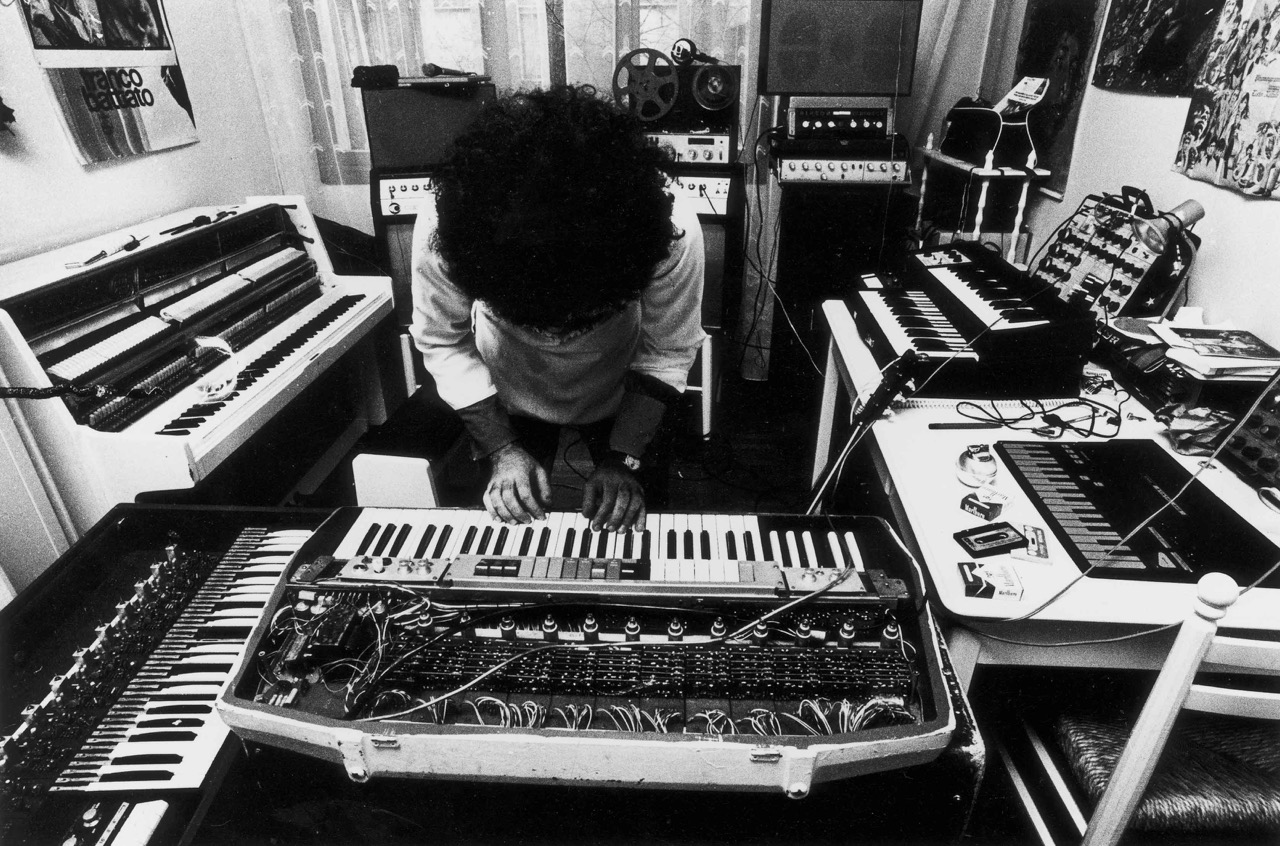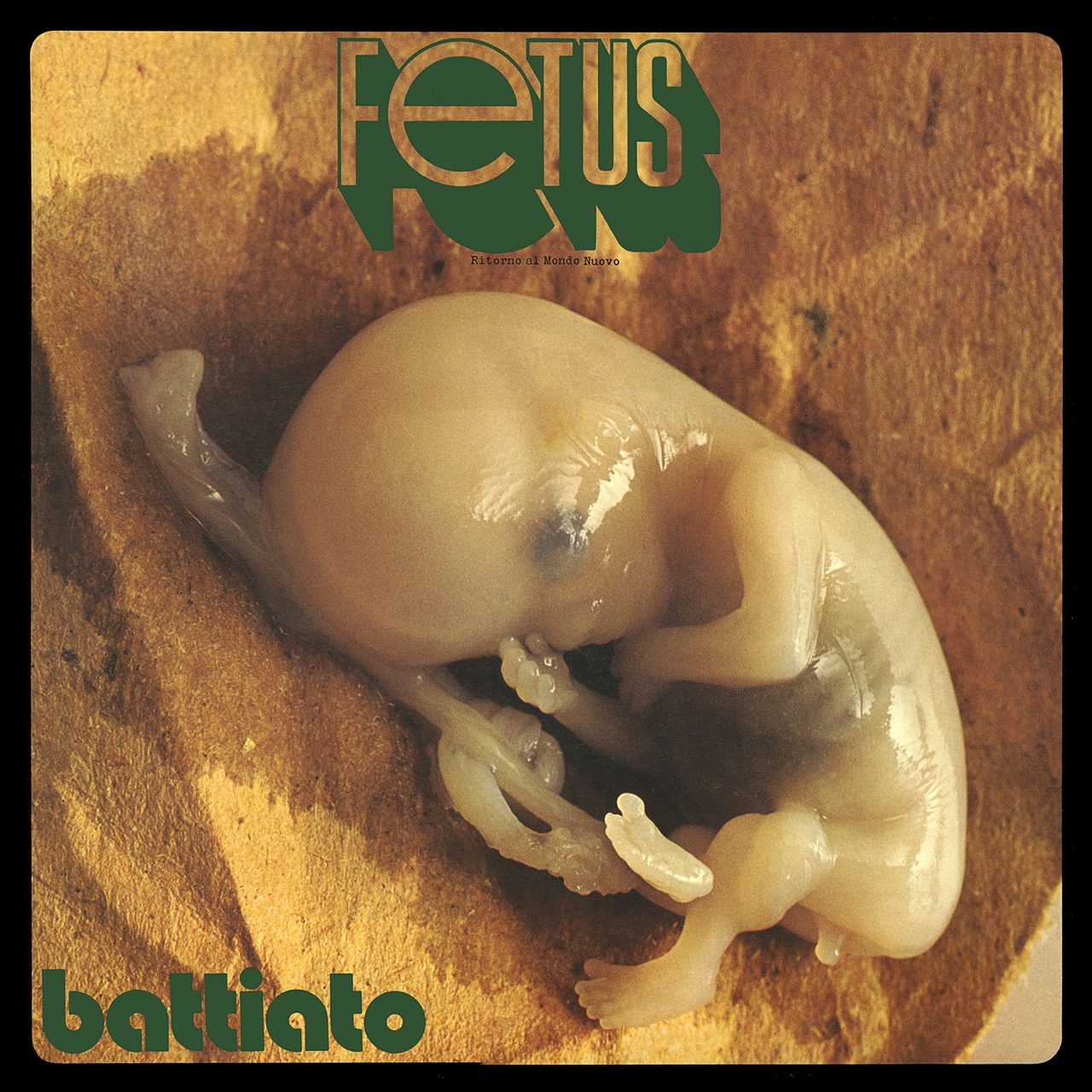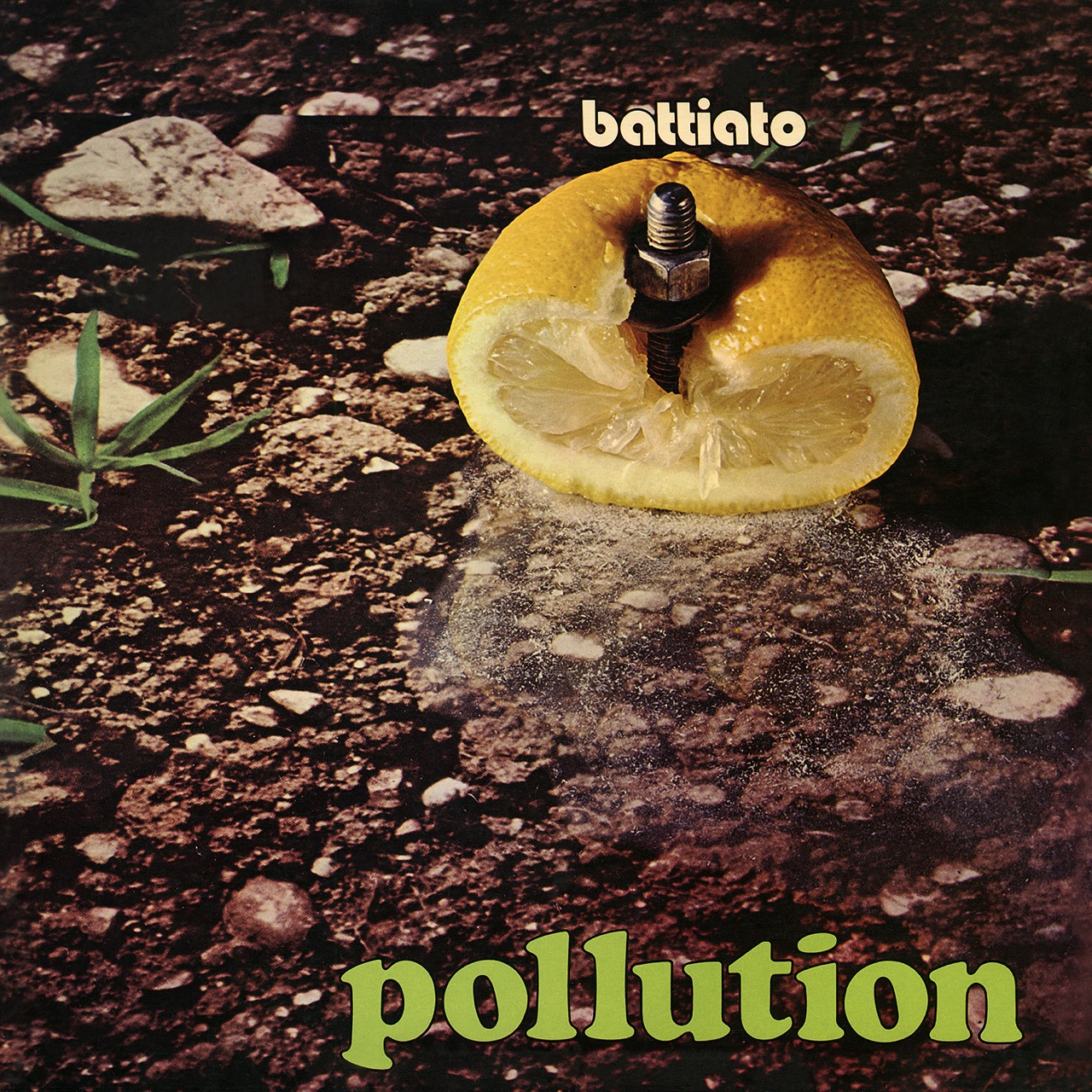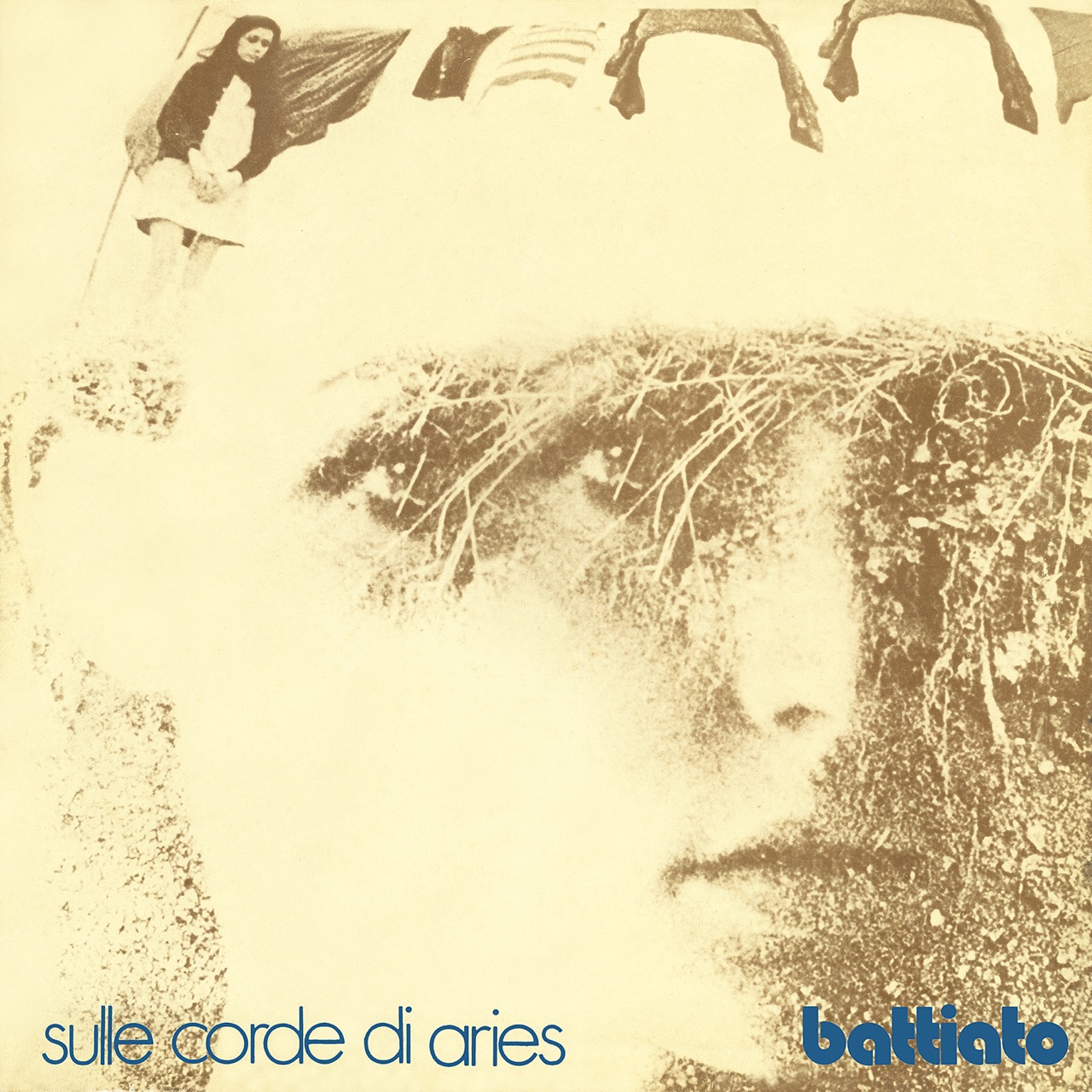 Simon Reynolds
Simon Reynolds
Prog Italiano! Three of the art-rocker’s early 1970s albums get their first US vinyl release.

Franco Battiato. Photo: Roberto Masotti.
Franco Battiato, Fetus, Pollution, and Sulle Corde Di Aries, released by Superior Viaduct
• • •
In the Anglophone world, Franco Battiato is known only to hip music fiends who actively seek out far-flung sounds. But in Italy, he’s a household name, a national treasure reverently called “Il Maestro.”
There isn’t really a comparable figure in the UK/US realm. Sometimes Battiato gets likened to Brian Eno, on account of his string of 1970s art-pop albums, three of which have just been issued on vinyl here for the first time by the label Superior Viaduct. There’s also a similar sonic arc, with their work growing more minimalist and meditational as the decade progressed. But Eno never went on to become a million-selling pop star in the 1980s, like Battiato did, nor represent his nation in that schlockathon, the Eurovision Song Contest. A better analogy might be with Brazil’s Tom Zé or France’s Serge Gainsbourg—charismatic individualists operating on the cusp between the avant-garde and mainstream entertainment. But neither rival Battiato’s polymath accomplishment, the startling width of an oeuvre that encompasses opera, films, books, and painting, as well as a discography now spanning six decades.
Battiato started out in the mid-1960s as a fairly conventional singer. Then at the threshold of the next decade, Italian rock fell under the heavy sway of the British progressive bands. As in other European countries, prog’s aspirations to nineteenth-century symphonic grandeur allowed musicians to bridge the gap between their own heritage and rock’s bluesy American roots. A swarm of Italian bands like Le Orme amplified the florid bombast of their English models. Battiato, though, belonged to a more interesting side-stream of Italian art-rock, one steeped in experimental influences such as Stockhausen, musique concrète, and free jazz. Battiato is a central figure in a recent book, Valerio Mattioli’s as-yet-untranslated Superonda, that argues for this close-knit scene as worthy of the same attention and acclaim as the krautrock movement of the same era. Yet unlike most of his associates, even when his music gets pretty frazzled and out-there Battiato’s dulce de leche melodies anchor the proceedings in pop.

Franco Battiato. Photo: Roberto Masotti.
Prog rock generally favored a seamless, organic approach to genre blending. In contrast, Battiato and his peers were more about fission than fusion. The first two albums in Superior Viaduct’s reissue program, Fetus (1971) and Pollution (1972), are full of multi-segmented songs that collage together four or five distinct sections with abrupt jump-cuts between styles and feels. Aspects of the production sometimes seem to leap right ahead to the New Wave 1980s, such as the inventive and huge-sounding drum rhythms, which avoid the full-kit 1970s style of splashy cymbals in favor of a stark tom-tom rumble. But other parts, reverb-spacious or heavily effected, feel like flashbacks to psychedelia.
Even Battiato’s compulsive penchant for quoting classical music has a peculiar future-retro quality. When he deploys chunks of a well-known piece such as Bach’s Air on the G String, it’s almost like an anticipation of sampling. But you could equally take it as the idée fixe of a fellow who never recovered from having his mind blown by Procol Harum’s “A Whiter Shade of Pale.”

One thing that’s absolutely in synch with the early 1970s is the concept album nature of both Fetus and Pollution. Loosely themed around genetic engineering, Fetus’s opener “Energia” starts with a newborn baby’s cries, which shift imperceptibly into toddler’s babble, then the chirruping speech of a small child who’s just learned to talk, followed by the more verbally exuberant chatter of older kids. A different kind of recurrent theme—melodic rather than conceptual—is introduced in the form of a needling synth leitmotif that poignantly evokes the tentative stirrings of life. That same sense of germinal mystery pervades pieces like “Una Cellula,” gradually expanding its frame of wonder from the microcosmic to the macrocosmic. “Meccanica” is laced with soundbites from NASA’s moon landing, while “Anafase” summons to mind Kubrick’s climactic image of a planet-sized fetus in 2001, A Space Odyssey.

Bowie’s “Space Oddity,” as it happens, is a sonic reference for several songs on Pollution. The album taps into that 1970s mood of environmental apprehension that rippled across pop culture: movies like Silent Running, novels like The Sheep Look Up, songs like . . . well, like, Bowie’s own “Five Years.” The title “31 Dicembre 1999 Ore 9” is conceivably a nod to Harry Harrison’s near-future overpopulation dystopia Make Room! Make Room! whose storyline ends on New Year’s Eve 1999. A serenely elegiac theme intermingled with the sounds of sobbing, “Ti Sei Mai Chiesto Quale Funzione Hai?” could be funeral parlor Muzak at the wake for Planet Earth.

Sulle Corde Di Aries (1973) inaugurates a new phase in Battiato’s work that is less overloaded with ideas, during which song structures are steadily abandoned for trance grooves. The backstory here is a breakdown brought on by the strain of Battiato’s high profile as a media provocateur and confrontational live performer. Retreating to Sicily, Battiato restoratively communed with the landscape of his childhood, while also immersing himself in the work of minimalist composers. Sulle features just four tracks, one of which, “Sequenze E Frequenze,” occupies a whole LP side and is probably the finest sixteen-minute stretch out of these three reissued albums. Organ flickers like solar rays breaking around the horizon of Jupiter give way to a shimmering surge of keyboard pulses, guitar stitch-work, and a tremolo riff of uncertain instrumental origin that uncannily anticipates the effects Steve Reich would use on Music for Eighteen Musicians. “Aria Di Rivoluzione” offers an Italian version of the medievalism that surfaces here and there in 1970s progressive music, with outfits like Third Ear Band. Framed with aching violoncello, Battiato sings as if from the turreted top of a high tower. But then often on these records, his melodies and synth motifs have a stately quality suggestive of court music from back when Italy was a patchwork of city-states.
Sulle was the first of a series of albums such as Clic and L’Egitto Prima Delle Sabbie that grew ever more spare and still. That sequence carried Battiato to the end of the 1970s, whereupon he abruptly decided to plunge into the mainstream. 1981’s La Voce del Padrone became Italy’s first million-selling album. Rather than Eno, a workable analogy at this stage might be Peter Gabriel, who shifted from Genesis-style prog to commercial but intelligent pop with arty videos and substance-laden lyrics. In Battiato’s case, these reflected his esoteric spiritual interests (“I have dedicated myself to the research of being” is how he once put it). This seeker’s path led him to convert to Sufism. From 1994 onward he largely outsourced the libretti side of his work to the philosopher Manlio Sgalambro, but still kept scoring in the Italian charts.
Battiato’s native status as a seer to be taken seriously is a bit beside the point for non-Italian listeners, given the language barrier. But even responding purely to the sonic surface, the mixture in Battiato’s music—especially evident in these early albums—of playful mischief and questing passion is captivating.
Simon Reynolds is the author of eight books about pop culture, including Retromania, the postpunk chronicle Rip It Up and Start Again, the techno history Energy Flash, and most recently Shock and Awe: Glam Rock and Its Legacy, from the Seventies to the 21st Century. Born in London, currently resident in Los Angeles, he is a contributor to publications including The Guardian, Pitchfork, and The Wire, and operates a number of blogs centered around the hub Blissblog.